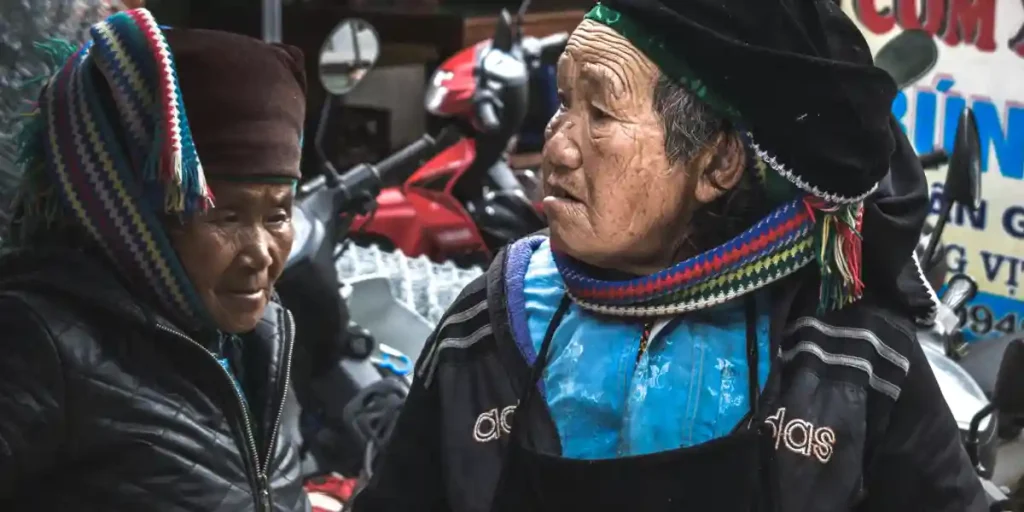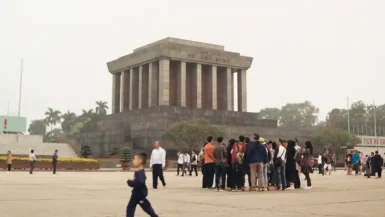Traveling to Vietnam offers a rich tapestry of experiences, from exploring ancient temples to indulging in world-renowned cuisine. However, understanding Vietnamese etiquette is essential for any traveler who wants to show respect and appreciation for the local culture. In this guide, we’ll explore the key aspects of Vietnamese etiquette, helping you navigate social situations with confidence and respect. This article will cover everything from greetings and dining manners to dress codes and communication styles. By the end, you’ll be well-prepared to enjoy your Vietnamese adventure while honoring the customs and traditions of this beautiful country.
Understanding the Importance of Vietnamese Etiquette
Vietnamese culture is deeply rooted in traditions that have been passed down for generations. Respect for elders, strong family ties, and a sense of community are central to Vietnamese society. The importance of these values is evident in daily life, from family gatherings to social interactions. As a visitor, it’s crucial to understand that etiquette in Vietnam goes beyond mere politeness; it’s about showing respect for the people and their way of life. Small gestures, like using both hands when giving or receiving something or slightly bowing your head when greeting someone, can make a significant difference.
Additionally, when entering a Vietnamese home, it’s customary to remove your shoes as a sign of respect. Similarly, when visiting temples or pagodas, dressing modestly is expected to show reverence for these sacred spaces. By adhering to Vietnamese etiquette, you demonstrate your appreciation for the culture and foster positive interactions with the locals. Engaging with the culture on this level not only enriches your travel experience but also helps to build meaningful connections with the people you meet. Understanding and respecting these cultural nuances allows you to navigate social situations more gracefully and ensures that your presence is welcomed.
Greetings: The First Step in Vietnamese Etiquette
In Vietnam, greetings are a significant aspect of etiquette. When meeting someone for the first time, a smile and a slight bow of the head are customary. This simple gesture conveys respect and warmth, setting a positive tone for the interaction. While handshakes have become more common, especially in urban areas, it’s essential to wait for the other person to extend their hand first. Jumping into a handshake without this cue can come across as forward or disrespectful.
Always greet the eldest person in a group first, as this shows respect for their age and status. Ignoring this custom can unintentionally offend, as the Vietnamese place great importance on hierarchy and seniority. When addressing someone, use their title and first name, such as “Mr. Tuan” or “Ms. Mai.” This form of address is a key part of Vietnamese etiquette and is appreciated in both formal and casual settings. Additionally, maintaining a gentle tone and avoiding overly loud or animated gestures during greetings will help you blend in smoothly with the local customs.
Dining Etiquette: A Deeply Respected Tradition
Dining in Vietnam offers a unique opportunity to experience the heart of Vietnamese culture. However, you must follow a set of etiquette rules to show respect. When invited to a meal, wait for the host to seat you, as seating often follows an order based on age and status. Vietnamese etiquette requires the eldest person at the table to start eating first, followed by the others. You should always serve others before serving yourself, especially the elderly or those with higher status, as this demonstrates politeness.
Chopsticks serve as the primary eating utensils in Vietnam, and their use comes with specific rules. Never stick chopsticks upright into a bowl of rice because this action resembles incense sticks used in funerals and brings bad luck. When not using chopsticks, rest them on the chopstick rest or place them across your bowl, but avoid leaving them sticking out of your food. These small actions carry significant meaning in Vietnamese etiquette, as they show a deep level of respect for the culture.
When dining, you should offer food to others at the table, especially to the elderly. Pour drinks for others before filling your own glass, and avoid filling your glass first, which may appear selfish. Leave a small amount of food on your plate when you finish eating to show that you’re satisfied and don’t need more. In Vietnamese etiquette, showing restraint and thoughtfulness during meals holds great importance.
Dress Code: Dressing Respectfully in Vietnam
Vietnamese people tend to dress conservatively, and this is reflected in the country’s etiquette regarding clothing. When visiting temples, pagodas, or religious sites, it’s important to dress modestly. Wear clothing that covers your shoulders, chest, and knees. This shows respect for the sacredness of the location and aligns with Vietnamese etiquette. For men, long pants and a collared shirt are appropriate, while women should consider wearing long skirts or pants and a blouse with sleeves.
Everyday outfit
In everyday situations, casual clothing works well, but choose modest attire whenever possible. Avoid wearing revealing outfits because many Vietnamese, especially in rural areas, consider them disrespectful. In cities like Hanoi and Ho Chi Minh City, younger locals often wear more modern styles, but they still maintain a sense of modesty. By following these guidelines, you show respect for Vietnamese etiquette and easily blend in with the local culture.
Events
When attending any formal event, Vietnamese etiquette dictates that you should dress more formally. Men might wear a suit or a nice shirt and trousers, while women often opt for dresses or ao dai, the traditional Vietnamese attire, especially for special occasions. The ao dai is not only beautiful but also a symbol of Vietnamese culture, often worn with pride during important ceremonies and celebrations.
Additionally, if you are invited to a Vietnamese home, it’s customary to remove your shoes before entering. This practice is deeply rooted in Vietnamese etiquette, as it shows respect for the cleanliness and sanctity of the home. It’s a simple gesture that means a lot to the host, and it’s important to follow this tradition to honor their hospitality.
Workplace
In the workplace, business attire should be conservative and professional. For men, a suit and tie are generally expected, while women should wear business suits or dresses that are not too revealing. Even in the heat, Vietnamese etiquette values modesty over comfort, so dressing appropriately is crucial in maintaining a professional image.
Beaches
While exploring Vietnam’s beautiful beaches, it’s acceptable to wear swimwear, but remember that covering up when leaving the beach is considered polite. Walking around in just swimwear, especially away from the beach, might be frowned upon by the locals. Bringing a cover-up or changing into more appropriate clothing before leaving the beach area aligns with Vietnamese etiquette and shows consideration for local customs.
Understanding and respecting Vietnamese etiquette in terms of clothing helps create positive interactions with locals. It also shows that you are mindful of their cultural values. As a traveler, being aware of these norms not only enhances your experience but also contributes to building respectful relationships with the people you meet.

Communication Styles: Navigating Conversations with Vietnamese Etiquette
Vietnamese people often communicate indirectly, placing a strong emphasis on maintaining harmony and avoiding conflict. Understanding this aspect of Vietnamese etiquette proves essential, as direct or confrontational communication can come across as rude or disrespectful. Rather than saying “no” outright, many Vietnamese individuals might respond with phrases like “I’ll try” or “I’ll think about it.” This approach preserves the other person’s dignity, reflecting a deeply ingrained cultural practice.
When addressing someone older or of higher status, use polite language and the appropriate title. Vietnamese etiquette highly values humility, so avoid boasting about your achievements or wealth. Offer compliments sincerely, but expect that many Vietnamese people will modestly downplay their accomplishments in return. In conversations, demonstrating modesty and respect plays a crucial role in adhering to Vietnamese cultural norms.
Limit physical contact during conversations, especially in more formal settings. A gentle touch on the arm might be acceptable between close friends, but more than that could be considered inappropriate. When giving or receiving something, always use both hands as a sign of respect. This small but significant gesture holds great importance in Vietnamese etiquette and shows your understanding of local customs.
Gift-Giving: An Important Aspect of Vietnamese Etiquette
Gift-giving in Vietnam is a common practice and an important part of Vietnamese etiquette. When visiting someone’s home, it’s customary to bring a small gift, such as fruit, sweets, or flowers. However, avoid giving handkerchiefs, as they symbolize sadness and farewell. Also, avoid giving anything in black or yellow. Vietnamese people associate these colors with funerals. In Vietnamese etiquette, the thought behind the gift is more important than the gift itself, so choose something that reflects your respect for the recipient.
When presenting a gift, offer it with both hands and a slight bow of the head. The recipient may not open the gift immediately, as it’s polite to do so later in private. This practice is part of Vietnamese etiquette and shows that the gift is appreciated regardless of its contents. If you receive a gift, express your gratitude, and if possible, reciprocate with a gift of similar value in the future. Understanding these customs is key to navigating Vietnamese etiquette successfully.
Respect for Elders: A Cornerstone of Vietnamese Etiquette
Vietnamese etiquette places a fundamental emphasis on respecting elders. Vietnamese society holds elders in high regard, and you can see this respect in various social interactions. When you enter a room, greet the eldest person first. When offering a seat, wait until the elder has taken their place before you sit down. If you’re sitting and an elderly person enters the room, stand up to show respect. These gestures may seem small, but they play a crucial role in Vietnamese etiquette and demonstrate your understanding of the culture.
When speaking to an elder, use formal language and address them with the appropriate honorifics, such as “Bác” for older men or women, “Ông” for older men, and “Bà” for older women. Avoid interrupting them when they speak, and listen attentively. If you disagree with an elder, express your opinion politely and respectfully. In Vietnamese etiquette, showing deference to elders is not just about politeness; it’s about honoring the wisdom and experience that comes with age.
Religious Etiquette: Showing Respect in Sacred Spaces
Vietnam is home to many beautiful temples and pagodas, and visiting these sites is a highlight of any trip. However, it’s important to follow proper religious etiquette to show respect for these sacred spaces. Before entering a temple or pagoda, remove your shoes as a sign of respect. Dress modestly, covering your shoulders and knees, and avoid wearing hats or sunglasses inside. In Vietnamese etiquette, these actions demonstrate your reverence for the spiritual significance of the location.
When inside a temple, speak quietly and move calmly. Avoid pointing with your finger. Vietnamese people consider this impolite. Instead, use your whole hand to gesture if needed. If you’re taking photos, be mindful of your surroundings and avoid using flash, which can disturb others. When making offerings, do so with both hands, and avoid placing them directly on statues or altars. In Vietnamese etiquette, understanding and respecting religious practices is crucial when visiting temples and pagodas.
Social Etiquette: Navigating Social Gatherings in Vietnam
Social gatherings in Vietnam are often warm and lively, with an emphasis on community and togetherness. When invited to a social event, it’s important to arrive on time. Punctuality is important in Vietnamese etiquette. Bring a small gift for the host, such as fruit or a bottle of wine, to show your appreciation. Upon arrival, greet everyone in the room, starting with the eldest or the person of highest status.
During the event, participate in conversations and activities, but avoid dominating the conversation. Vietnamese etiquette values humility and respect for others, so listen more than you speak, and avoid interrupting others. If someone offers food or drink, accept it graciously, even if you’re not hungry or thirsty. Refusing an offer may seem as impolite in Vietnamese etiquette.
When it’s time to leave, thank the host and say goodbye to each person individually. A slight bow or handshake is appropriate, depending on the level of formality. Express your gratitude for the invitation and hospitality, as this is an important part of Vietnamese etiquette.
Conclusion: Embracing Vietnamese Etiquette for a Meaningful Experience
Understanding and respecting Vietnamese etiquette is key to a successful and meaningful visit to Vietnam. By following these guidelines, you’ll not only show respect for the local culture but also enrich your own travel experience. Whether you’re greeting someone for the first time, enjoying a meal, or visiting a sacred site, Vietnamese etiquette provides a framework for respectful and harmonious interactions. As you explore this beautiful country, remember that every action, no matter how small, contributes to the overall impression you leave with the people you meet. Embrace Vietnamese etiquette, and you’ll find that your journey is not just about seeing new places, but about connecting with the culture and the people who call Vietnam home.



